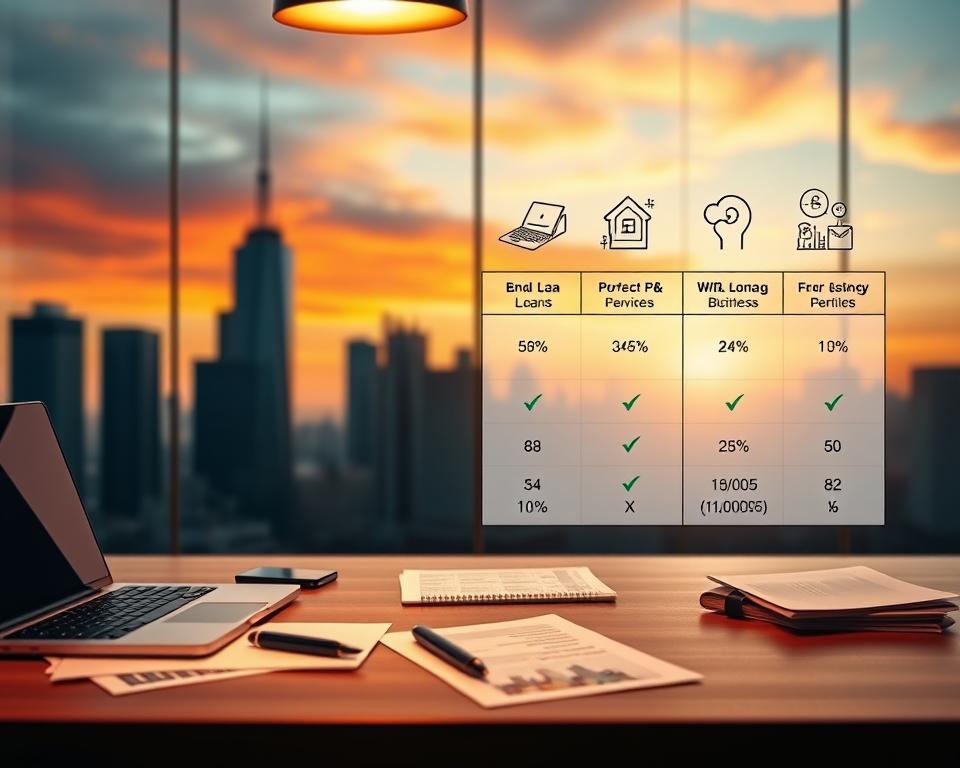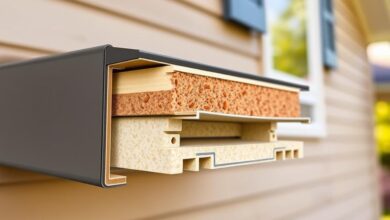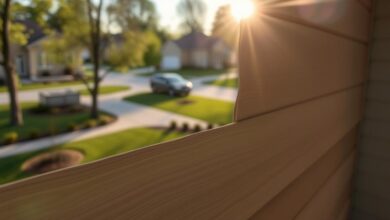Insulated Siding: Is It a Smart Choice for Your Home?
Homeowners are always looking for ways to make their homes better. They want them to be more energy-efficient and cost-effective. Insulated siding is a popular choice. It makes your home look great and adds insulation.
Energy costs are going up, so homeowners are looking for ways to save. Home improvement options like insulated siding can help. It keeps your home warm in winter and cool in summer. This helps with energy efficiency.
Key Takeaways
- Insulated siding offers improved energy efficiency for homes.
- It can lead to significant savings on utility bills.
- The material enhances the exterior of your home.
- It’s a viable option for homeowners looking for home improvement solutions.
- Insulated siding provides better thermal performance.
What Is Insulated Siding and How Does It Work?
Insulated siding combines the protection of traditional siding with modern insulation. It offers a complete solution for homeowners. They get a better exterior and improved energy efficiency.
The Structure and Components
Insulated siding has several layers. It includes a strong exterior finish, insulation, and a backing material. The exterior finish fights off weather, and the insulation layer stops heat from moving in and out.
The main parts are:
- A tough exterior finish, like vinyl or fiber cement.
- A foam insulation layer that blocks most heat.
- A backing material that keeps the siding strong.
How It Differs from Traditional Siding
Insulated siding is different from regular siding. It doesn’t just protect against weather. It also keeps your home warm in winter and cool in summer. This means less energy use.
Understanding R-Value and Insulation Performance
The R-value shows how well insulation stops heat. A higher R-value means better insulation. Insulated siding usually has an R-value of R-3 to R-5.
Knowing the R-value helps homeowners see how much energy they can save. It shows how well the siding works.
The Benefits of Installing Insulated Siding
Installing insulated siding can change your home for the better. It saves energy and lasts longer. This siding makes your home look great and work better.
Energy Efficiency and Utility Bill Savings
Insulated siding is great for saving energy. It keeps your home’s temperature steady, so you use less heat and air conditioning. This means you’ll pay less for your utilities, saving you money.
Noise Reduction Properties
Insulated siding also makes your home quieter. It blocks out outside noises, making your home peaceful. This is great for homes near busy streets or noisy areas.
Enhanced Durability and Impact Resistance
Insulated siding is tough and lasts longer. It can handle impacts and weather better, so you won’t need to fix it as often. It’s a smart choice for those who want a durable home.
Aesthetic Improvements and Curb Appeal
Lastly, insulated siding makes your home look better. It comes in many styles and colors. This can make your home more attractive and even increase its value.
Potential Drawbacks to Consider
Insulated siding has many benefits, but it also has some downsides. Homeowners need to know these challenges before deciding.
Higher Initial Investment
One big drawback is the higher initial cost of insulated siding. The insulated siding cost can be a big deal for those watching their budget. But, think about the long-term savings on energy and the possible boost in your home’s value.
Installation Complexity and Requirements
The installation complexity of insulated siding is a challenge. It needs skilled labor to avoid problems like moisture buildup. Make sure to choose experienced contractors who know how to install it right.
Potential Moisture Concerns
Moisture concerns are a big deal with insulated siding. If not handled right, moisture can cause mold, mildew, or damage. Proper ventilation and following the manufacturer’s instructions can help avoid these issues.
Types of Insulated Siding Options
There are many types of insulated siding, each for different needs. Homeowners can pick from various materials and systems. Each has its own benefits and features.
Vinyl Insulated Siding Products
Vinyl insulated siding is loved for its toughness and easy care. It combines vinyl with foam insulation for better heat control. Vinyl insulated siding fights off moisture and weather. It comes in many colors and styles, fitting many homes.
Fiber Cement Insulated Options
Fiber cement siding is strong and looks good. It’s made of cement, sand, and cellulose fibers. Adding insulation makes it more energy-efficient. Fiber cement also keeps pests and fire away.
Foam Backed vs. Integrated Insulation Systems
Insulated siding comes in foam-backed and integrated types. Foam-backed has foam on the back of the siding. Integrated systems mix insulation into the siding. Foam-backed insulation cuts down on heat loss. Integrated systems are easier to install.
| Type of Insulated Siding | Key Benefits | Notable Features |
|---|---|---|
| Vinyl Insulated Siding | Durable, Low Maintenance | Resistant to moisture, Various colors/styles |
| Fiber Cement Insulated Siding | Robust, Long-lasting | Resistant to pests and fire, Energy efficient |
| Foam Backed Insulation | Reduces thermal bridging | Effective insulation, Easy to install |
Choosing insulated siding depends on climate, budget, and style. Knowing the options helps homeowners pick the best for their needs.
Is Insulated Siding Worth It? Analyzing Cost vs. Value
To figure out if insulated siding is a good choice, we need to look at its cost and value. Homeowners should think about the upfront cost, long-term savings, and how much they might get back.
Initial Cost Breakdown by Material Type
The cost of insulated siding changes based on the material. For example, vinyl insulated siding is often cheaper, costing between $3 to $7 per square foot. On the other hand, fiber cement insulated siding can be pricier, ranging from $6 to $10 per square foot. Knowing these prices helps make a better choice.
Long-Term Energy Savings Calculation
Insulated siding helps save energy, which can cut down on utility bills. The U.S. Department of Energy says homes can save 15% on heating and cooling costs with better insulation. This means a typical homeowner could save $200 to $300 each year.
Return on Investment Timeline
The time it takes to get back the money spent on insulated siding varies. It depends on the local weather, the siding’s current state, and the material chosen. Usually, homeowners can see their investment pay off in 7 to 10 years through energy savings.
“Insulated siding not only enhances a home’s energy efficiency but also its overall value,”
an expert in home renovation points out.
Tax Credits and Incentives
Installing insulated siding might also qualify you for tax credits and incentives. The Residential Renewable Energy Tax Credit and local programs can help cover some of the costs. It’s wise to talk to a tax expert to see what you can get in your area.
In summary, while insulated siding might seem expensive at first, its long-term benefits and the chance to get your money back make it a good choice for many homeowners.
How to Choose and Install the Right Insulated Siding
To get the most out of insulated siding, picking the right type and installing it correctly is key. This means several important steps, from checking your home’s needs to finding a good contractor.
Assessing Your Home’s Needs
Before picking insulated siding, you need to know what your home needs. Think about your siding’s current state, your budget, and how much energy you want to save. Home assessment is a must to find the best siding for you.
Selecting the Right Type for Your Climate
Insulated siding varies by climate. For cold areas, choose siding with high R-values. For warmer places, look for siding that’s durable and looks good. Climate considerations are very important here.
Finding and Vetting Qualified Contractors
After picking the right siding, find a good contractor. Look for those with siding installation experience and check their work history. A skilled contractor is key for a job well done.
The Step-by-Step Installation Process
The installation process has several steps. First, remove old siding. Then, check and fix the structure underneath. Lastly, put in the new siding. Here’s a table with the steps:
| Step | Description | Notes |
|---|---|---|
| 1 | Remove Old Siding | Carefully remove existing siding to inspect the underlying structure. |
| 2 | Inspect and Repair | Inspect for damage and make necessary repairs to ensure a solid base. |
| 3 | Install New Siding | Install insulated siding according to manufacturer instructions. |
By following these steps and thinking about your home’s needs, you’ll enjoy insulated siding for many years.
Conclusion: Making the Smart Choice for Your Home
Insulated siding is a great choice for those wanting to improve their home. It boosts energy efficiency, durability, and looks. Knowing the pros and cons helps homeowners make the best choice for their situation.
Insulated siding offers many advantages. It saves energy, reduces noise, and lasts longer. Though it costs more upfront, the long-term savings and higher property value make it a good investment.
Before choosing insulated siding, think about your home’s needs. Pick the right type for your area and work with skilled contractors. This way, you’ll enjoy its benefits for many years, making it a smart choice for your home.







